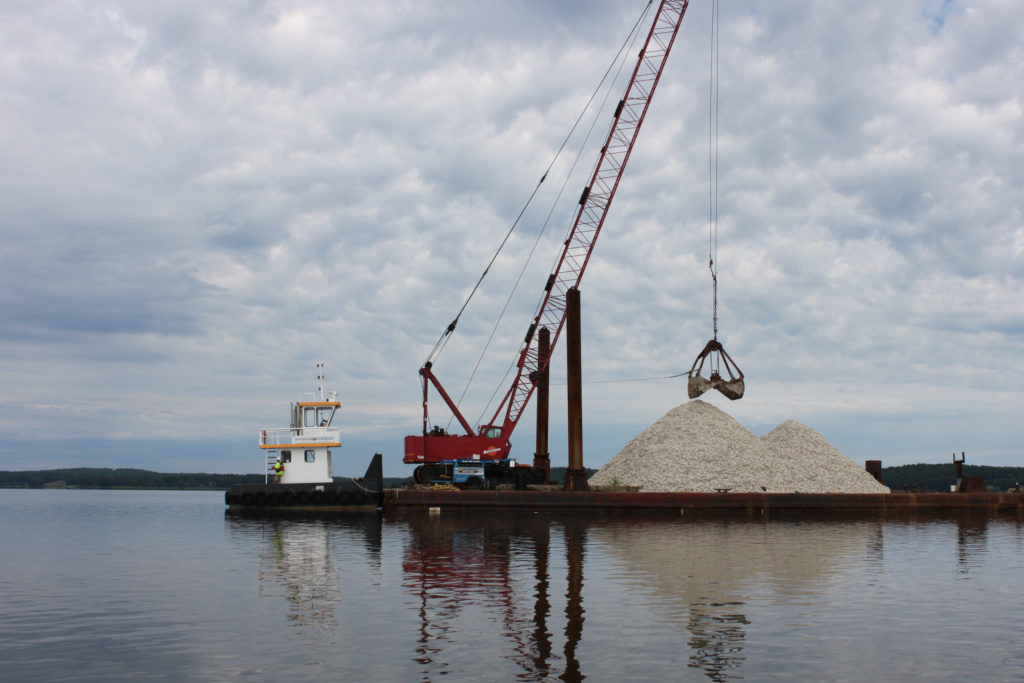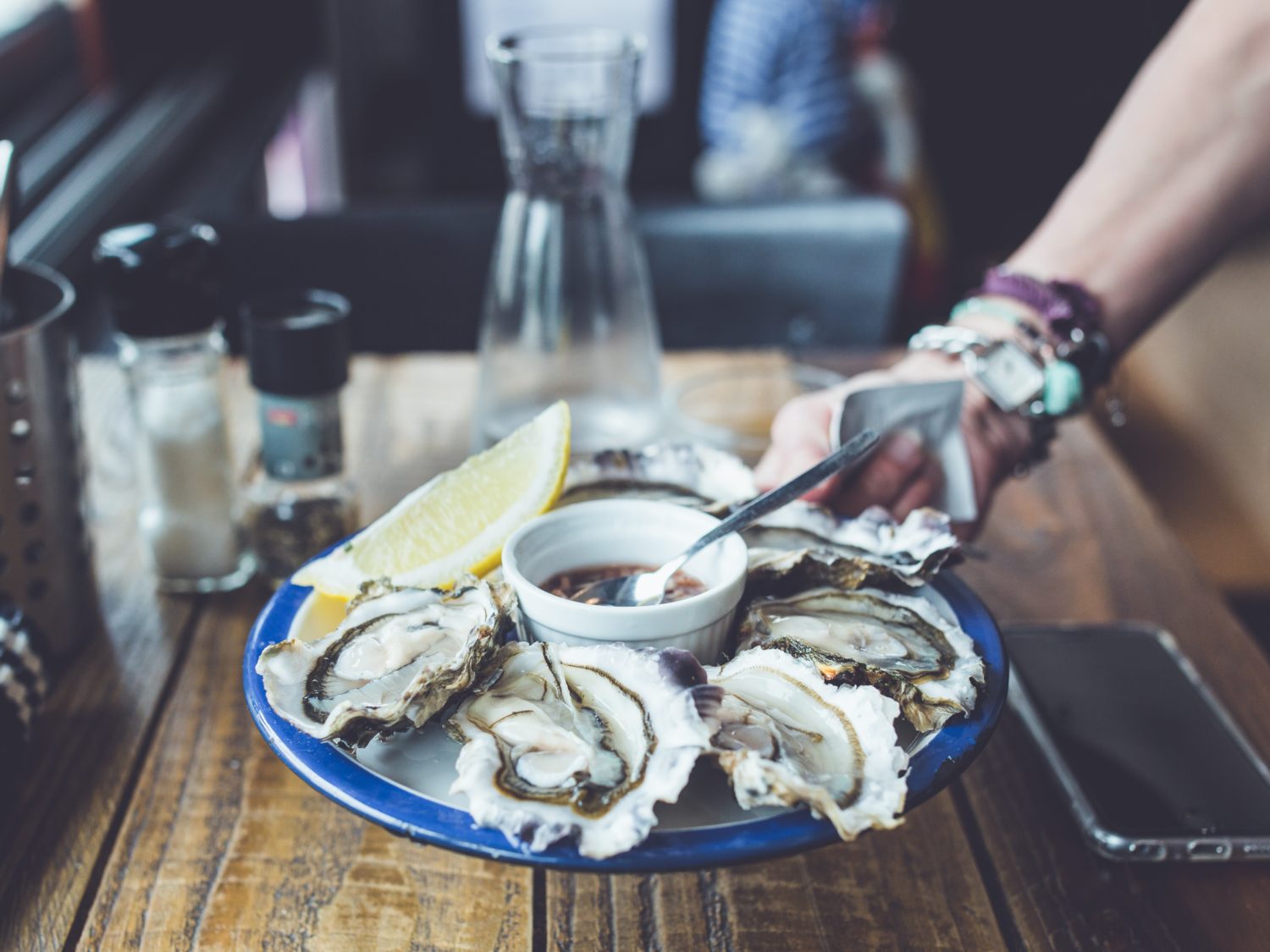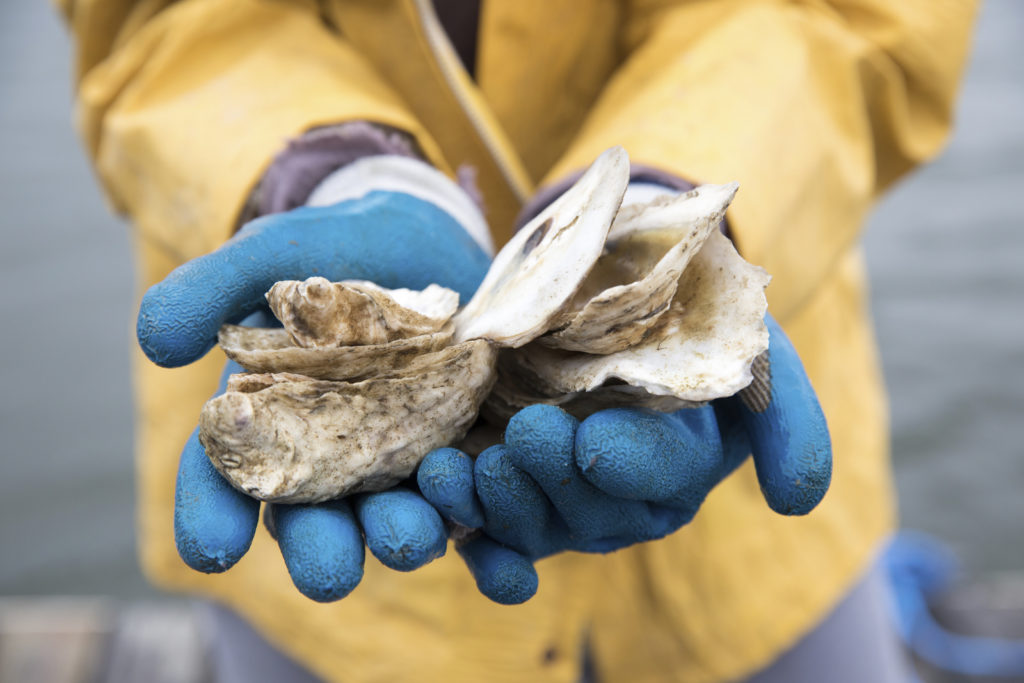By Alix Laferriere, The Nature Conservancy
There are so many reasons to love oysters, from their delicate and salty flavor – the French poet Léon-Paul Fargue likened it to “kissing the sea on the lips” – to the livelihood they provide the local growers who raise these little mollusks. Oysters also play a critical role in maintaining the health and resilience of our estuaries. Each bivalve can filter up to 30 gallons of water per day, removing suspended particles and clearing the surrounding waters. In addition, their reefs provide important habitat for native fish and invertebrates and can help alleviate erosion and buffer shorelines – these are called ecosystem services.
Our Great Bay Estuary used to be covered by oyster reefs. Unfortunately, a large portion of those reefs have been lost due to sedimentation, overharvest, environmental stressors and disease. And with the loss of the oyster reef system came a loss of those ecosystem services provided by the reefs.

Figure 14.2 from the 2018 State of Our Estuaries Report
As part of the Great Bay 2020 initiative , The Nature Conservancy (TNC) has identified oyster reef restoration as an essential strategy for improving the conditions in Great Bay, and currently has restored a 22.7-acre footprint through a collaborative partnership with the University of New Hampshire. However, further strategic restoration efforts are needed to enable a resilient and balanced ecosystem. Therefore, TNC, in coordination with PREP, has embarked on developing a near-term strategy for oyster restoration within the Great Bay Estuary.
This “Restoration by Design” project is focused on developing a restoration strategy for Great Bay that includes a review of past restoration efforts and identifies new sites to guide near-term oyster restoration opportunities in the estuary. The strategy aims to integrate site suitability for oyster restoration with additional considerations such as oyster aquaculture harvest areas and opportunities, eelgrass regeneration areas, and social and recreational interests. We recognize that these habitats and activities must coexist in order to promote a healthy ecosystem and vibrant, local, marine-based heritage and economy.

Oyster restoration in action in Great Bay. Photo: Taja Sims-Harper/The Nature Conservancy
In order to refine our knowledge of best site selection, design, and implementation practices for oyster reef restoration, our project incorporates in-water monitoring with sensors and samples and assessment. Additionally, bathymetric (aka estuary floor/depth) mapping being conducted in the estuary furthers our understanding of sediments and mud and its effects on restored sites.
Finally, a critical aspect of the project is meeting and working with all those who care about oysters to help guide the design of future restoration. Trevor Mattera and Kalle Matso of PREP, with their expertise on process and decision making, are advising and assisting Alix Laferriere of TNC in working with key stakeholders to solicit comments on the restoration plan, and adjust the plan as needed to accommodate concerns or conflicts. Through this combination of in-water science and oyster lover feedback, this project will produce a map and strategy for future reef construction.
Our goal of the Restoration by Design project is to enable TNC and our Great Bay habitat restoration and all of our collaborators, from oyster farmers to oyster to eaters to scientists, to literally map out and begin to pursue a collective vision and path forward for oyster restoration efforts. And we invite you to become involved! If you or someone you know are interested and would like to provide input on the restoration plan, to review and weigh in on the current iteration contact Alix Laferriere (Alix.laferriere@tnc.org) for more details. We look forward to seeing you at the workshop and at the local oyster bar!
And we invite you to become involved! If you or someone you know are interested and would like to provide input on the restoration plan, to review and weigh in on the current iteration contact Alix Laferriere (Alix.laferriere@tnc.org) for more details. We look forward to seeing you at the workshop and at the local oyster bar!
Contact
Alix Laferriere
Alix.laferriere@tnc.org
Coastal and Marine Director
The Nature Conservancy
This project is funded by the Natural Resources Conservation Service (NRCS)
This post was originally published in August, 2018 by PREP and The Nature Conservancy proud partners of the Every Drop Alliance. #EveryDropMatters


